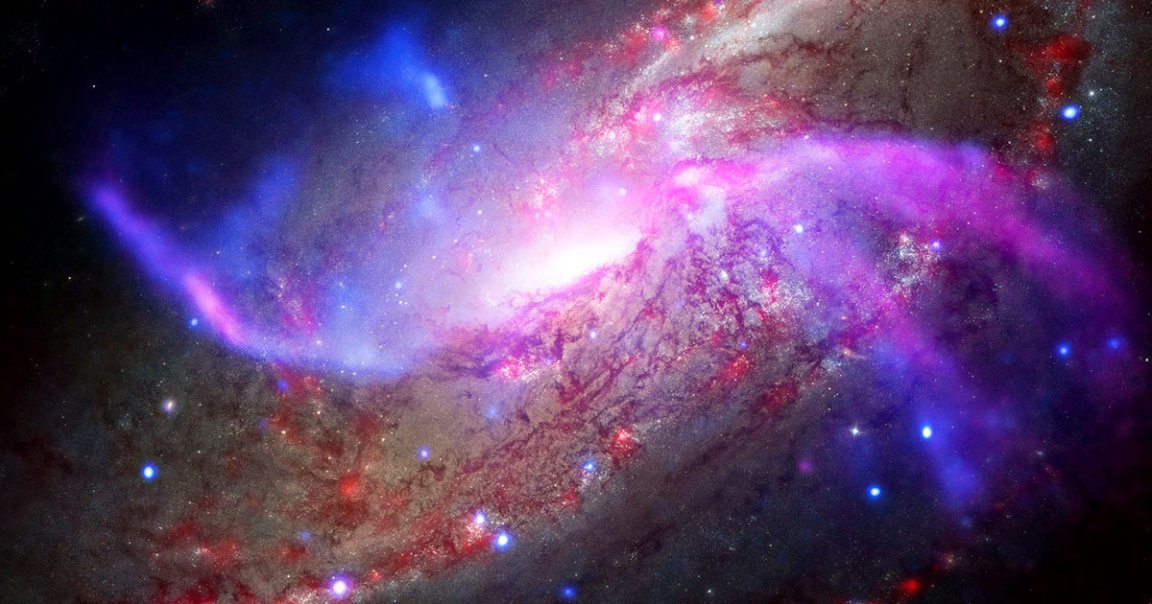
NASA’s James Webb Space Telescope has made one of its “most unexpected” discoveries to date: tiny red dots in some of the oldest corners of the universe, which turned out to be “baby” life stages of supermassive black holes.
After studying observations by the groundbreaking observatory, the team concluded that “faint little red dots very far away in the universe’s distant past are small versions of extremely massive black holes,” as team lead Jorryt Matthee, astrophysics assistant professor at the Institute of Science and Technology Austria and lead author of a new paper published in The Astrophysical Journal, explained in a statement.
“These special objects could change the way we think about the genesis of black holes,” he added.
The team is hoping to hone in on how these early-stage supermassive black holes, which often lurk at the center of large galaxies including our own, came to be and how they change over billions of years.
“The present findings could bring us one step closer to answering one of the greatest dilemmas in astronomy: According to the current models, some supermassive black holes in the early universe have simply grown ‘too fast,'” Matthee explained. “Then how did they form?”
As their name suggests, supermassive black holes can reach epic proportions, anywhere from millions to billions of times the mass of our Sun. While scientists believe they can grow by merging with other black holes, their origin remains an active field of study.
Over the last couple of years, scientists have found evidence of one hiding at the center of the Milky Way dubbed Sagittarius A*, which is roughly 4.3 million times the mass of the Sun.
Some types of supermassive black holes, called quasars, are extremely luminous galactic cores that light up as gas and dust fall into them. They’re some of the brightest objects in the universe, emitting thousands of times more light than our entire galaxy.
Matthee and his colleagues believe the little red dots in the JWST images are quasars — except that they’re far smaller than their counterparts elsewhere.
“One issue with quasars is that some of them seem to be overly massive, too massive given the age of the universe at which the quasars are observed,” Matthee said in the statement. “If we consider that quasars originate from the explosions of massive stars and that we know their maximum growth rate from the general laws of physics, some of them look like they have grown faster than is possible.”
As a result, the astrophysicist suggests the “little red dots are more like ‘baby quasars,'” with masses somewhere between “ten and a hundred million solar masses.” They likely predate the stage of these “problematic quasars,”as Matthee puts it, which are more massive than they should be.
As for why they’re red, Matthee has a simple answer: “Because they are dusty. The dust obscures black holes and reddens the colors” in the observations.
The “baby quasars” are destined to balloon into much larger supermassive black holes, eventually turning into ones that appear blue thanks to the bright disc of matter that orbits and feeds them.
“Studying baby versions of the overly massive SMBHs in more detail will allow us to better understand how problematic quasars come to exist,” Matthee concluded.
The team used datasets acquired by the EIGER (Emission-line galaxies and Intergalactic Gas in the Epoch of Reionization) experiment to come to their conclusion.
While EIGER wasn’t designed to find the little red dots in particular, the team “found them by chance in the same dataset,” Matthee explained.
But mysteries linger, and more research will be needed.
“So far, we have probably only scratched the surface,” Matthee said.
More on supermassive black holes: James Webb Spots “Extremely Red” Black Hole